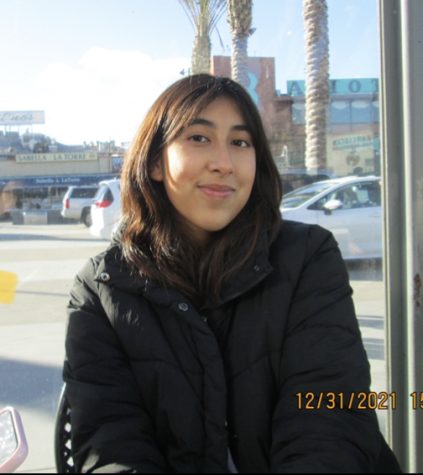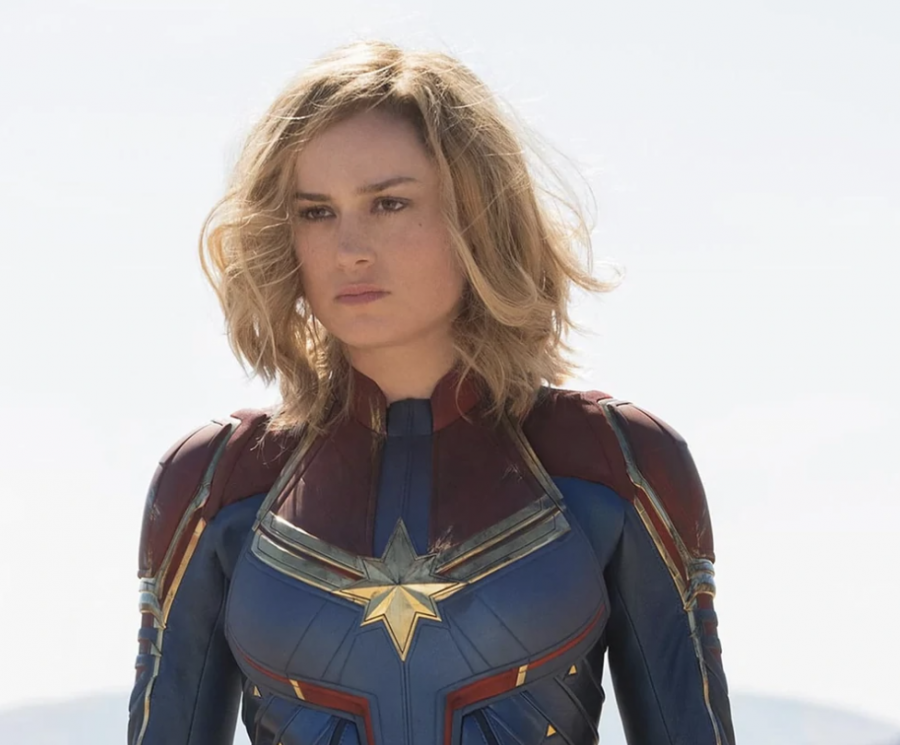In Defense of Captain Marvel: How the male gaze affects female-led movies
Carol Danvers, also known by her superhero alias as Captain Marvel, stars in Marvel’s first female-led movie.
On March 4, 2019, Marvel Studios released their first female-led movie, Captain Marvel. The story follows Carol Danvers, also known by her superhero alias as Captain Marvel, who uncovers the truth about her past just in time to save an alien life force. Danvers, played by actress Brie Larson, gains her superpowers after absorbing energy from the space stone: one of the six infinity stones from the Marvel universe. While many criticize that the female superhero was introduced too late in the franchise and that the movie glorifies the military, the majority of backlash stemmed from male critics who either did not like Danvers’ character, or Brie Larson as a person.
Just days after the movie was released in theaters, fans took to social media platforms such as Twitter, Youtube, and Reddit to express their dislike for Captain Marvel and its “progressive agenda.” Online trolls bombarded Captain Marvel’s rotten tomatoes page with hateful comments about Carol Danvers’ character. Ironically, the same Marvel fans praised the Marvel characters, Tony Stark from Ironman, and Thor, for their confidence while also criticizing Captain Marvel’s headstrong personality. Birds of Prey, the 2020 DC movie starring Margot Robbie as Harley Quinn was similarly hated by many male critics. Both films fail to satisfy the male gaze.
The phrase “male gaze” was coined in 1975 by movie theorist Laura Mulvey to describe how female characters are portrayed as objects of sexual desire in film. The male gaze is defined as the way the director views and portrays the female character, how the male characters in the scene view the female character, and finally, how male audience members view the female characters. Marvel lacks the ability to flush out female characters and often portrays its female heroes through the male gaze.
For example, the character Black Widow, aka Natasha Romanoff, felt that she was a monster because she could not have kids; this ultimately suggests that women’s only purpose is to bear children. In addition, many of the costumes female heroes wear in the Marvel Cinematic Universe (MCU) are too tight, revealing, and paired with high heels. While Black Widow beating up multiple villains in heels and a half-zipped-up suit is a power move, it begs the question whether Black Widow was created for the male gaze. Both Captain Marvel and Black Widow are extremely valuable and powerful female heroes in the MCU but what makes Captain Marvel different, and attracts more hate from male Marvel fans, is that she was never portrayed for male approval.
Perhaps because Captain Marvel was directed by a female director — Anna Boden collaborated with Ryan K. Fleck — the movie was not filmed to appeal solely to male fans. Captain Marvel was the first female-led movie from the MCU and one of its main goals was to empower young girls in the audience. The input of a female voice on a film can greatly influence how it is presented. Captain Marvel dons a full coverage suit excluding high heels to help her fight more effectively. She is not meant to be seen as an object of desire to men, but rather, is portrayed as a powerful hero like Tony Stark, Captain America, and Thor. Thanks to the effort of a large female crew, Captain Marvel appealed mainly to a female audience. It’s not that movies that are produced without the influence of the male gaze cannot be enjoyed by male fans, in fact, male fans would benefit from watching more movies without the male gaze to see how female characters can be portrayed accurately. Both male and female directors must do a better job of creating female characters that exist for themselves and not for the male gaze.
What can be done about the male gaze affecting movies? The answer is simple: the movie industry needs more female voices. It needs female directors, female cinematographers, female writers, and crew members. In order to make more accurate female-led movies, we should trade in the manic pixie dream girl trope for powerful headstrong female characters, like Captain Marvel. The movie industry is notoriously male-dominated but by creating more spaces for female voices, more films like Captain Marvel will be produced.

Madison Rojas is a senior at Mayfield Senior School and currently serves as the Editor-in-Chief of The Mayfield Crier. Madison has received multiple awards...


